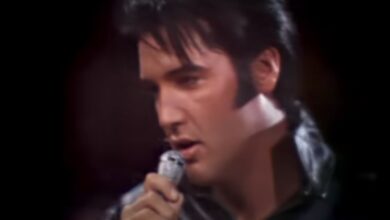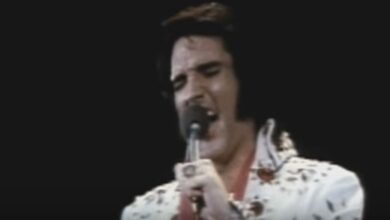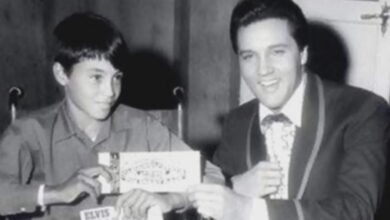Hearing this always leaves me breathless and fills me with longing for him
The rehearsal of Elvis Presley’s Gospel Medley for the 1968 Comeback Special offers an intimate and revealing look into one of his most memorable performances. This medley, which features three powerful gospel songs—”Sometimes I Feel Like a Motherless Child,” “Where Could I Go But to the Lord,” and “Up Above My Head”—is a testament to Elvis’s deep connection to gospel music and his remarkable vocal prowess.
The rehearsal begins with “Sometimes I Feel Like a Motherless Child,” a song that holds significant emotional weight. From the outset, Elvis’s voice is strikingly strong and full of emotion. The raw and unfiltered quality of his performance during the rehearsal reveals his deep commitment to the material. His interpretation of the song is heartfelt, with each note conveying a profound sense of longing and introspection. This track showcases Elvis’s ability to channel intense personal feelings into his music, making the performance both poignant and deeply moving.
As the medley transitions to “Where Could I Go But to the Lord,” Elvis’s vocal performance becomes even more compelling. The song’s theme of seeking solace and refuge in faith is powerfully expressed through Elvis’s delivery. His voice, now even more commanding, rises above the accompaniment of the backing singers and the band, imbuing the lyrics with a sense of sincerity and conviction. The way he articulates the words reflects his genuine belief and emotional investment in the song, enhancing its spiritual resonance.
The final part of the medley, “Up Above My Head,” brings a contrasting yet complementary energy to the performance. This upbeat and spirited gospel number allows Elvis to showcase a more playful and exuberant side. The chorus, “Up above my head, I hear music in the air,” is delivered with an infectious enthusiasm that lifts the entire mood of the rehearsal. The lively rhythm and Elvis’s engaging performance infuse the song with a sense of joy and celebration, providing a vibrant conclusion to the medley.
The expanded version of the rehearsal provides additional context and insight into Elvis’s process and interaction with his backing singers and band. The behind-the-scenes footage highlights the collaborative nature of the performance, as Elvis works through the songs, making adjustments and exploring different vocal nuances. This aspect of the rehearsal underscores the meticulous effort and artistic dedication that went into crafting the final performance.
Elvis’s connection to gospel music is deeply rooted in his personal and professional life. His appreciation for the genre began in his youth, and gospel songs often featured prominently in his repertoire. This medley, performed as part of the 1968 Comeback Special, represents a culmination of his lifelong engagement with gospel music and serves as a poignant reminder of its importance in his career.
The 1968 Comeback Special itself was a significant moment in Elvis’s career, marking his return to live performance after a period of focusing on film work. The special, which included this gospel medley, reestablished him as a dynamic and influential performer and reaffirmed his place in the music industry. The special’s blend of old and new material, combined with Elvis’s compelling stage presence, revitalized his career and introduced his music to a new generation of fans.
In summary, the rehearsal of Elvis Presley’s Gospel Medley for the 1968 Comeback Special is a powerful demonstration of his talent and his profound connection to gospel music. The performance captures the essence of Elvis’s vocal strength, emotional depth, and playful spirit. It stands as a testament to his enduring legacy and his ability to connect with audiences through the timeless power of music.



